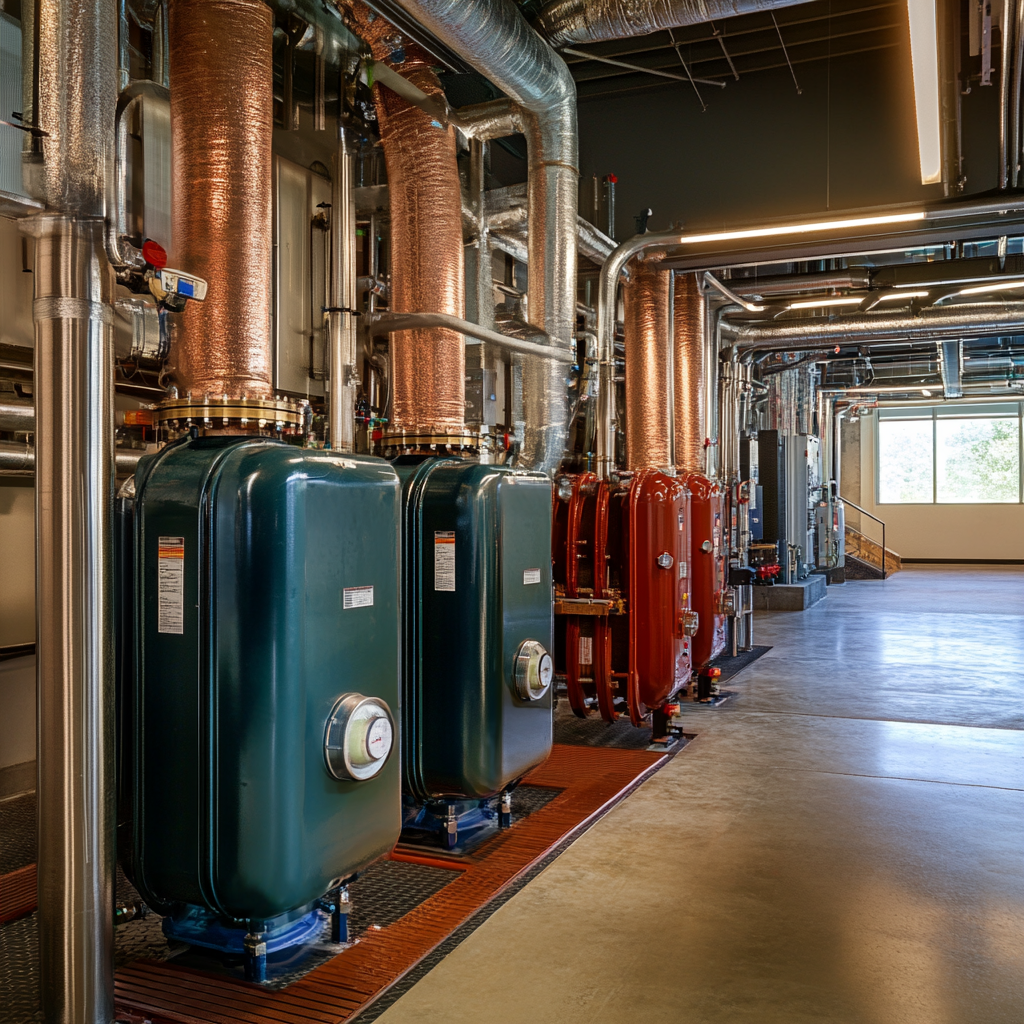Hydronic and Steam Systems
Hydronic and steam systems are two popular methods for heating and cooling in commercial HVAC (Heating, Ventilation, and Air Conditioning) applications. Here’s a detailed look at each system:
Hydronic Systems
How They Work:
Hydronic systems use water or a water-based solution as the medium to transfer heat. The process involves heating water in a boiler and then circulating it through a network of pipes to radiators, baseboard heaters, or underfloor heating systems. For cooling, the system can circulate chilled water to fan coil units or air handling units.
Components:
- Boiler: Heats the water.
- Pump: Circulates the water through the system.
- Radiators/Baseboards/Fan Coils: Emit heat or cool air into the space.
- Expansion Tank: Absorbs excess pressure due to water expansion.
- Thermostat: Controls the system temperature.
Advantages:
- Efficiency: Hydronic systems are known for their high efficiency, as water is a better heat conductor than air.
- Comfort: They provide even and consistent heating and cooling.
- Quiet Operation: These systems are typically quieter than forced air systems.
Applications:
Hydronic systems are often used in commercial buildings, such as offices, schools, hospitals, and large residential complexes, where precise and efficient temperature control is crucial.
Steam Systems
How They Work:
Steam systems heat water in a boiler to create steam. The steam is then distributed through a network of pipes to radiators or heat exchangers, where it releases heat and condenses back into water. The condensate returns to the boiler to be reheated and reused.
Components:
- Boiler: Generates steam.
- Steam Pipes: Transport steam to radiators or heat exchangers.
- Radiators/Heat Exchangers: Transfer heat to the space.
- Condensate Return System: Collects and returns condensate to the boiler.
- Pressure Control: Maintains system pressure.
Advantages:
- Quick Heating: Steam systems can rapidly heat a space.
- Simplicity: Fewer moving parts than hydronic systems.
- Versatility: Can be used for both heating and industrial processes.
Applications:
Steam systems are common in older commercial buildings, industrial facilities, and institutions such as universities and hospitals, where there is a high demand for both space heating and process steam.
Comparison
Efficiency:
- Hydronic systems tend to be more energy-efficient due to the better heat retention properties of water.
- Steam systems can be less efficient due to heat losses through steam traps and vents.
Maintenance:
- Hydronic systems require regular maintenance of pumps, boilers, and heat emitters.
- Steam systems need consistent maintenance of boilers, steam traps, and condensate return systems.
Installation:
- Hydronic systems can be more complex to install, especially with underfloor heating.
- Steam systems can be simpler to retrofit in older buildings already equipped with steam heating.
In conclusion, both hydronic and steam systems offer unique advantages for commercial HVAC applications. The choice between them depends on specific building needs, existing infrastructure, and desired efficiency.


